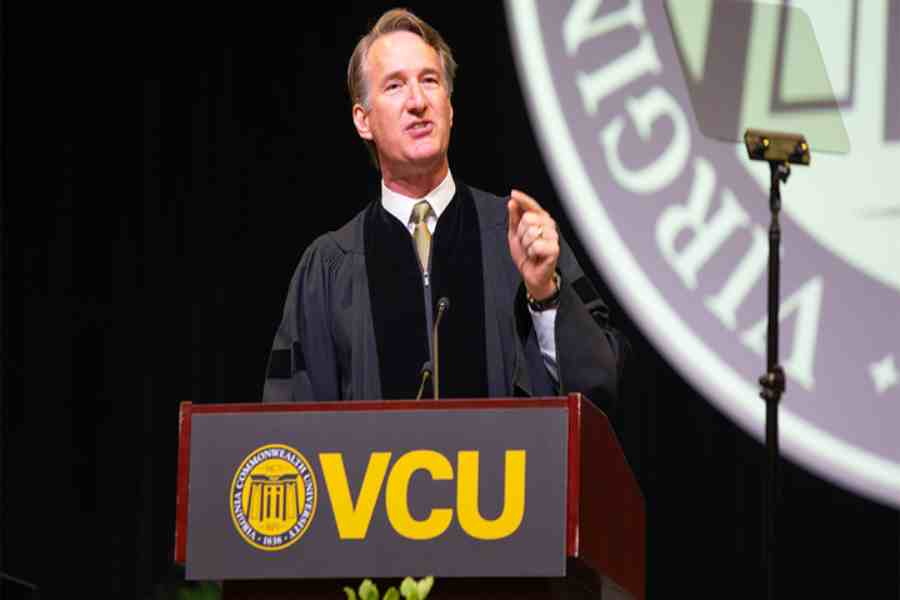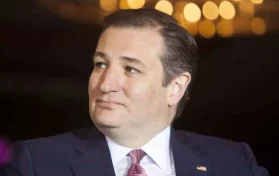
At the 2024 commencement ceremony of Virginia Commonwealth University (VCU), the Greater Richmond Convention Center became the backdrop for a striking display of student activism. Originally planned as a celebration of academic milestones, the event swiftly morphed into a powerful political demonstration.
As Governor Glenn Youngkin took to the podium to deliver his commencement address, dozens of students, clad in their graduation regalia, coordinated a walkout, making a bold statement that resonated beyond the confines of the auditorium. This act was not merely a momentary disruption but a calculated expression of dissent against policies and positions championed by Governor Youngkin, particularly concerning educational and social issues that have stirred significant debate and unrest across campuses.
The atmosphere, charged with a mix of anticipation and resolve, underscored the gravity of the statement being made by these graduating students. As they exited, the ceremonial air filled with a mixture of applause and shouts, encapsulating the conflict between traditional academic celebration and the urgent need for political engagement and change. This pivotal moment highlighted the dual nature of commencement as both an endpoint and a platform for voicing transformative ideas and calls to action.
A Demonstrative Beginning
The commencement ceremony at Virginia Commonwealth University began with a poignant gesture that set a contemplative tone for the day. As the opening chords of the national anthem filled the Greater Richmond Convention Center, all eyes were drawn to the student singer whose choice of attire—a keffiyeh—made a silent yet powerful statement. This traditional Arab headscarf, recognized globally as a symbol of Palestinian solidarity, immediately signaled the depth of political and social awareness that pervaded the graduating class.
This deliberate choice of symbolic dress did more than just adorn; it spoke volumes about the collective consciousness of the students. It prefaced the sequence of events with a clear message of empathy and solidarity, reflecting a broader commitment to global issues that transcend the academic achievements being celebrated. The keffiyeh, worn proudly and visibly, encapsulated a defiance and a plea for attention to causes that the students held close to their hearts, weaving the personal with the political in a public academic setting.
As the anthem progressed, the symbolic weight of the keffiyeh resonated throughout the auditorium, bridging individual expression with communal advocacy. This moment was not just about a single student’s choice of attire but about a shared spirit of activism that challenged attendees to reflect on broader societal issues. It set a precedent for the day, underscoring the ceremony not just as a milestone of academic success but as a platform for expressing solidarity and calling for thoughtful engagement on pressing global matters.
The Walkout
As Governor Glenn Youngkin, a contentious figure due to his educational and social policies, began his commencement address, the atmosphere in the venue shifted palpably. A significant group of students, signaling their disagreement with his administration’s stance, stood up in unison. The act of rising from their seats served as a strong visual and symbolic gesture of protest.
As they made their way out of the Greater Richmond Convention Center, the sounds of applause and cheers erupted from certain sections of the audience, providing an audible layer of support for the demonstrators. This vocal endorsement highlighted the divided sentiments among the attendees.
The students donned their graduation regalia, and gathered outside the venue, transforming their ceremonial attire into symbols of resistance. They quickly unfurled banners with poignant messages such as “No graduation as usual” and “Unacceptable leadership.” These signs not only conveyed their dissatisfaction but also underscored the depth of their convictions. As they began their march toward Abner Clay Park, their chants—”Educate, not indoctrinate!” and “Leadership means listening!”—echoed through the streets. The resonant voices of the students carried their messages far beyond the immediate vicinity, weaving their grievances into the broader fabric of societal discourse.
This march was not just a physical movement from one location to another; it was a powerful act of expression, channeling the collective energy of the graduates into a public demonstration of their concerns and demands. The journey to Abner Clay Park became a procession of purpose, a moving tableau of civic engagement that underscored the graduates’ commitment to influence and change the societal structures they were stepping into.
This walkout, emblematic of their time at the university, was a declaration of their unwillingness to passively accept policies they found objectionable, marking their transition from students to active societal participants.
Underlying Causes Of The Protest
The walkout during Governor Youngkin’s speech was fueled by a complex mixture of dissatisfaction with his policies on race, gender, and his administration’s approach to civil unrest, particularly concerning the Israel-Hamas conflict and broader U.S. foreign policy decisions. In the aftermath of the event, students openly voiced their concerns in interviews, shedding light on the deep-seated reasons for their dissent. Siatta Kaba, a graduate of African American Studies, became a prominent voice among the protesters. Kaba’s journey through personal and academic challenges significantly shaped their activist stance, bringing a poignant human element to the issues at hand.
Kaba shared a powerful narrative about their decision to embrace activism, which was intensified by the loss of their mother during their freshman year—a tragedy that almost derailed their educational aspirations. This personal history, combined with their academic focus, played a crucial role in their participation in the walkout.
The curriculum of African American Studies, deeply rooted in the history of civil rights and activism, provided Kaba and other students with a framework to understand and challenge contemporary social injustices.
Their activism was not just a reaction to specific policies but a broader critique of systemic issues they perceived in governance and societal structures, particularly those affecting marginalized communities.
The students’ protests were thus a manifestation of both personal convictions and an academic philosophy that advocates for substantial societal change and accountability, particularly in areas concerning race and gender equity.
This incident at VCU is part of a larger trend of campus activism that has been particularly pronounced in Virginia. With Governor Youngkin at the helm, the state has seen heightened tensions around educational policies, particularly those concerning racial and gender issues. The governor’s previous appearances at other universities, such as George Mason University, have similarly been met with student protests, signaling widespread unrest among the student bodies.
The VCU walkout, expected and discussed publicly in the weeks leading up to the ceremony, was a planned act of protest that Governor Youngkin acknowledged but dismissed as misguided. His remarks at the ceremony, focusing on unity and resilience, contrasted sharply with the divisive issues at play.
The university administration and the state’s response to the growing wave of student protests have been marked by a significant law enforcement presence and arrests, including the controversial use of pepper spray and riot gear during demonstrations. Over 130 arrests have been made across Virginia in the context of similar protests, highlighting the scale of the dissent and the robustness of the official response.
Governor Youngkin’s administration has been actively involved in shaping educational policies that have spurred these protests. His stance on prohibiting encampments and his administration’s advisory to university presidents on handling protests have been pivotal in framing the state’s approach to dealing with student activism.
Echoes Of The Past And Future Directions
The student-led protests at VCU and other Virginia universities draw parallels with past movements, such as those during the Civil Rights era and the protests against the Vietnam War. These historical precedents provide a rich backdrop against which the current activism can be understood as part of a long tradition of youth-led social change.
Looking forward, the implications of these protests are manifold. They reflect a deeply engaged and politically active student population that views the academic space as a relevant arena for advocating social justice and policy reform.
The debates ignited by these protests are likely to influence not only future educational policies but also the broader dialogue on race, gender, and international relations within the academic and public spheres.
As the academic year at VCU concluded with pomp and protest, the events of the commencement ceremony highlighted the critical role that institutions of higher education play in fostering civic engagement and debate.
The walkout was not merely a moment of protest but a declaration of the graduating students’ commitment to influencing societal issues through the tools and perspectives they have gained during their academic journey. As these students step into the wider world, the legacy of their protest remains a poignant reminder of the power of educated voices in shaping public discourse.





